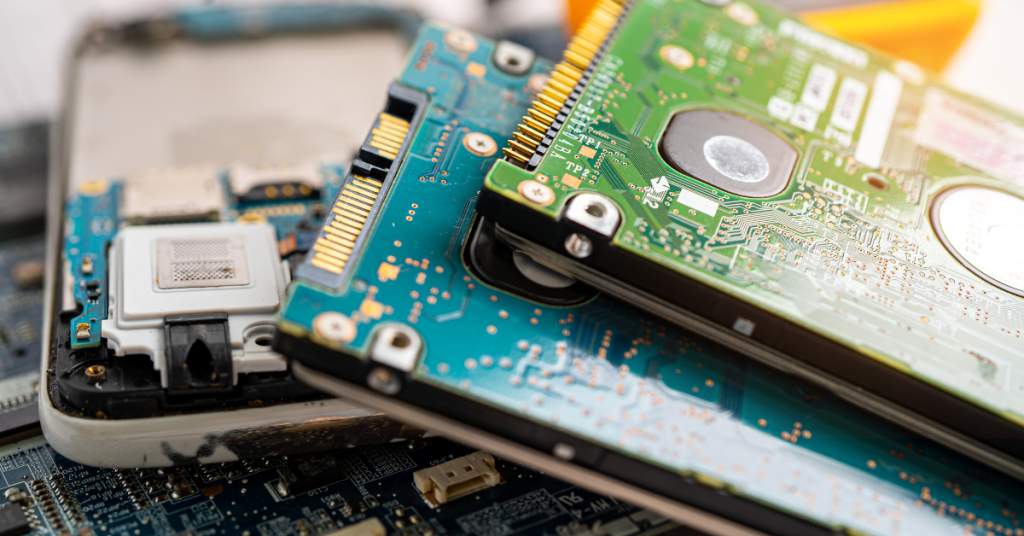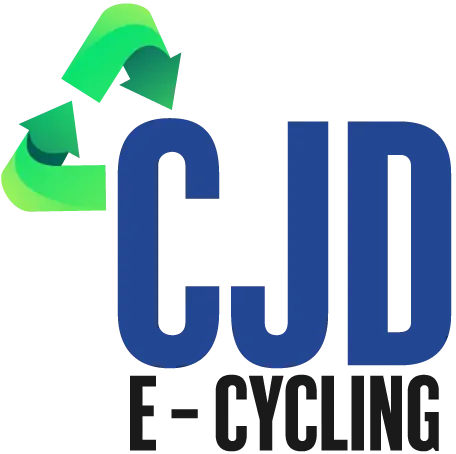
In today’s digital age, the surge of electronic devices has led to an alarming increase in e-waste. Proper recycling practices are essential to mitigate the environmental impact of discarded electronics.
CJD E-Cycling stands out as a pioneer in electronic circuit board recycling in the greater St. Louis area, leading the way in sustainable e-waste management. Review our accepted electronic and metal items.
What Makes Circuit Board Recycling Unique?
Complex Composition:
Circuit boards are intricate assemblies of metals, plastics, and other materials, making their recycling a complex but essential task. The various components require specialized methods to separate and reclaim valuable materials.
Value of Precious Metals:
Embedded within these boards are valuable metals like gold, silver, and palladium, which can be recovered and reused. This not only conserves resources but also provides economic benefits.
The Environmental Impact of Improper Disposal
Toxic Components:
Circuit boards often contain hazardous substances like lead, mercury, and cadmium, posing significant environmental and health risks if not disposed of properly.
Pollution:
Improper disposal can lead to the release of these toxic materials, contaminating air, water, and soil, which can have severe consequences for ecosystems and human health.
E-Waste Statistics:
Current data highlights a growing global e-waste crisis, emphasizing the need for effective recycling strategies. The volume of e-waste generated is increasing annually, making proper recycling more critical than ever.
The Recycling Process: Beyond the Basics
Advanced Techniques:
Bioleaching:
This innovative method uses microorganisms to recover metals from circuit boards, offering an eco-friendly alternative to traditional methods.
Hydrometallurgy:
Chemical processes are employed to extract valuable materials. While effective, this method produces a significant amount of wastewater that requires careful treatment.
Pyrometallurgy:
High-temperature techniques are used to recover metals, but this process can release harmful gases if not managed properly.
Innovative Separation Methods:
Technologies like cryogenic processing and automated sorting systems enhance the efficiency of recycling by precisely separating different materials.
Economic and Social Benefits of Recycling Circuit Boards
Economic Savings:
Recycling is more cost-effective than extracting raw materials from the earth. The recovery of precious metals from circuit boards reduces the need for mining and lowers production costs.
Community Impact:
Responsible recycling supports local economies and promotes community health through reduced environmental contamination. By recycling e-waste, communities can also create jobs and support local businesses.
Common Challenges and Solutions in Circuit Board Recycling
Material Complexity:
Recycling circuit boards involves separating a complex mix of materials. Advanced technologies and innovative methods are essential for effectively recovering valuable components.
Handling Hazardous Waste:
Adhering to best practices ensures the safe disposal and recycling of hazardous components, protecting workers and the environment.
Technology and Innovation:
Continuous advancements in technology are crucial in overcoming the challenges faced in circuit board recycling. Research and development in this field are essential for improving efficiency and safety.
CJD E-Cycling’s Commitment to Sustainable Practices
Eco-friendly Methods:
CJD E-Cycling employs environmentally responsible methods to recycle electronic waste, minimizing the environmental impact of their operations.
Certifications and Standards:
The company adheres to rigorous standards such as R2 and e-Stewards, ensuring responsible recycling practices that meet high environmental and safety standards.
Community Engagement:
CJD E-Cycling actively educates and involves the community in recycling efforts, fostering a culture of sustainability and environmental stewardship.
FAQs (People Also Ask)
Can Circuit Boards Be Recycled?
Yes, circuit boards can be recycled. The process involves recovering valuable materials and safely disposing of hazardous components.
How to Recycle Circuit Boards?
Recycling circuit boards involves advanced techniques like bioleaching, hydrometallurgy, and pyrometallurgy, along with innovative separation methods. Each method has its benefits and challenges.
Where to Recycle Circuit Boards Near Me?
CJD E-Cycling is the premier local option for recycling circuit boards, offering comprehensive services in the greater St. Louis area.
Who Buys Electronic Scrap Near Me?
CJD E-Cycling provides services for buying electronic scrap, ensuring proper recycling and disposal while offering financial incentives.
The Future of Circuit Board Recycling
Technological Advancements:
Emerging technologies are set to revolutionize recycling, making it more efficient and effective. Innovations in material separation and recovery processes are continually being developed.
Sustainable Design:
Designing electronics with recycling in mind will simplify the process and enhance sustainability. Manufacturers are increasingly focusing on creating products that are easier to disassemble and recycle.
Global Trends:
Predictions indicate stricter regulations and increased emphasis on recycling, driving the industry towards more sustainable practices. Governments and organizations worldwide are recognizing the importance of addressing the e-waste problem.
Conclusion
Proper recycling practices are crucial in addressing the e-waste problem, conserving resources, and protecting the environment. Recycling circuit boards not only has economic benefits but also significantly reduces environmental impact.
Join the movement towards sustainable e-waste management by contacting CJD E-Cycling for your recycling needs. Together, we can make a difference in reducing e-waste and promoting a healthier environment.
